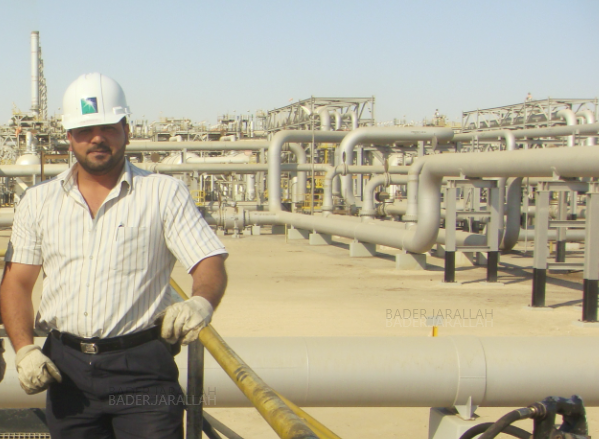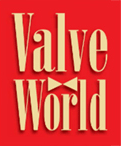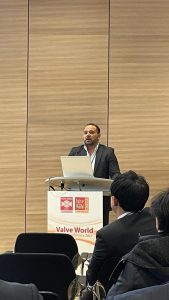Bader Al-Jarallah, a Valve Engineering Consultant at Saudi Aramco, shares his invaluable insights on the critical challenges facing the valve industry and discusses strategies for optimizing valve performance, reliability, and maintenance in this exclusive interview with Valve World.
By Melonie Dodaro, Valve World
Bader Al-Jarallah has an extensive educational background, with a B.S. in Mechanical Engineering and M.S. in Material Engineering. He joined Saudi Aramco in 1995 and has served as the Chairman of the Valve Engineering Standards Committee, in addition to being a committee member for several engineering standards.
“Since joining Aramco, I have dealt with various design, commissioning, operations, troubleshooting and maintenance issues related to valves. This diverse experience has given me a well-rounded perspective on valve lifecycle management,” Bader shared.
Advancements in additive manufacturing
Reflecting on major changes and developments in the valve industry, Bader noted the increasing focus on additive manufacturing.
“Technological advancements in digitalisation and materials have led to growing interest in the advantages additive manufacturing can provide for valves, such as optimised designs, reduced lead times, and on-demand spare parts.”
Additive manufacturing allows for the creation of complex geometries and lightweight structures that would be difficult or impossible to achieve with traditional manufacturing methods. This opens up new possibilities for valve design optimisation, leading to improved performance and efficiency. In addition, additive manufacturing can streamline valve production and maintenance processes by enabling on-demand production of components, reducing lead times and inventory requirements. This is particularly advantageous for spare parts, as it eliminates the need to stock a large variety of components and enables faster replacement of critical parts. Additive manufacturing techniques like selective laser melting and electron beam melting also allow for the use of high-performance alloys and even gradient materials, expanding the options for valve materials and enabling the creation of valves with enhanced durability, corrosion resistance, and temperature tolerance.
However, Bader acknowledged the challenges associated with additive manufacturing adoption in the valve industry, such as ensuring consistent quality control, validating the long-term performance of additively manufactured valves, and establishing industry standards and guidelines. Despite these challenges, he remains optimistic about the future of additive manufacturing in the valve sector as the technology continues to mature and more companies invest in research and development.
Risk-based approach to valve maintenance
Bader emphasized the importance of a risk-based approach to prioritise critical valves and optimise maintenance resources. Implementing a risk-based maintenance (RBM) strategy is crucial for effectively managing valve assets and ensuring plant safety and reliability. The first step in an RBM approach is to conduct a comprehensive valve criticality assessment, evaluating each valve based on criteria such as its function, failure modes, and the potential consequences of failure on safety, environmental impact, and production loss. By ranking valves according to their criticality, operators can prioritize maintenance efforts and allocate resources more efficiently. Highly critical valves require more frequent inspections and stringent maintenance protocols, while less critical valves can be maintained at longer intervals or with less intensive methods. Bader also highlighted the importance of considering valve reliability data in the RBM process. Collecting and analysing data on valve performance, failure rates, and maintenance history provides valuable insights into the reliability of different valve types and manufacturers. This information can be used to fine-tune maintenance strategies, optimise spare parts inventory, and make informed decisions about valve replacements or upgrades.
Implementing an RBM approach not only enhances plant safety and reliability but also offers significant economic benefits by reducing downtime, extending valve life, and minimising overall maintenance costs. However, successful RBM implementation requires a strong data management system, cross-functional collaboration between teams, and ongoing monitoring and adjustment of maintenance strategies based on performance data. Despite the challenges, Bader strongly advocates for the adoption of risk-based maintenance in the valve industry, as it is no longer a luxury but a necessity in today’s complex plants. By embracing RBM, operators can enhance safety, improve reliability, and optimise their maintenance spend, ultimately leading to better overall plant performance.
Valve integrity management program
“Online inspection techniques and preventive maintenance at set intervals, coupled with major overhauls as needed, form the basis of an effective valve integrity management program,” said Bader. He stressed the significance of a comprehensive approach to ensure valve reliability and minimize downtime.
Bader emphasized the importance of incorporating online inspection techniques, such as acoustic emission testing and ultrasonic testing, into the valve integrity management program. These techniques allow for the assessment of valve condition without process interruption, enabling early detection of issues and timely intervention. Preventive maintenance at set intervals, based on factors like valve criticality and service conditions, is also crucial and includes activities like lubrication, calibration, and minor repairs. For critical valves or those in harsh environments, major overhauls involving complete disassembly, inspection, and repair may be necessary. Bader stressed the importance of having a well-documented program with clear procedures, maintenance schedules, and record-keeping requirements, as well as regular audits to ensure compliance with industry standards and best practices.

Proper lubricant and sealant selection
Proper valve lubricant and sealant selection was another focus area. Bader co-authored a recent article on this topic, which highlighted key criteria like service compatibility, sealant capability, pumpability, and stability with the process fluid and temperature. Selecting the right lubricant and sealant is essential to ensure valve functionality and reliability, as using incompatible or inadequate products can lead to valve failure, increased maintenance costs, and unplanned downtime.
In the article, Bader discussed the challenges posed by the lack of industry-wide standards for lubricant and sealant selection. He recommends that end users work closely with their suppliers to ensure the products meet the specific requirements of their valve applications and conduct their own testing to validate product performance under actual operating conditions. By carefully considering these factors and partnering with knowledgeable suppliers, end users can select the right lubricants and sealants to optimise valve performance and reliability, which is a critical aspect of valve maintenance that can significantly impact plant operations and profitability.
Qualification testing for sealants
While international standards are lacking, Bader recommends testing products for consistency, dropping point, fluid stability and heat resistance to qualify sealants for the intended application. “Improper sealant selection can lead to failures like hardening, dissolution, or poor sealing ability. Taking the time upfront to carefully evaluate products can prevent bigger issues down the line,” he noted.
Bader emphasised the importance of conducting thorough qualification testing to ensure that sealants will perform as expected in the specific valve application. Consistency (ASTM D217) determines the sealant’s ability to be easily injected and maintain its integrity. Dropping point (ASTM D2265) ensures the sealant will not melt or flow out under high-temperature conditions. Fluid stability, assessed through immersion testing, ensures the sealant can withstand exposure to the process fluid without breaking down or losing sealing capability. Heat resistance (ASTM D2595) evaluates changes in the sealant’s properties after exposure to high temperatures.
By conducting thorough qualification testing, end users can have greater confidence in the performance and reliability of the sealants they select. While it may require additional time and resources upfront, investing in comprehensive testing can help to avoid costly failures and downtime in the long run.
Advancing valve engineering standards
When asked about goals for the future, Bader expressed his desire to continue advancing valve engineering standards and best practices to support ever-changing industry needs. Through his roles at Saudi Aramco and participation in standards committees, he hopes to drive progress in areas like valve design optimisation, additive manufacturing, and prescriptive maintenance guidelines to maximize valve reliability and integrity.
Bader emphasized the importance of updating standards to keep pace with technological advancements and evolving industry requirements. He sees potential for standards development in valve design optimisation, utilising advanced simulation tools and data analytics to provide prescriptive guidelines for materials selection, dimensional tolerances, and performance testing. Additive manufacturing is another area where he believes standards will play a critical role in driving adoption and ensuring quality, by providing guidance on materials, processes, and quality control.
Prescriptive maintenance guidelines, including recommendations on data collection, analysis, condition monitoring techniques, and maintenance intervals based on valve criticality and service conditions, can help end users optimise their maintenance programs and minimise the risk of valve failures. Bader highlighted the importance of collaboration and knowledge-sharing in advancing valve engineering standards through participation in standards committees. By continuously updating and expanding standards, the industry can drive innovation, reduce costs, and minimise the risk of failures, which is essential to the long-term success of the valve industry.
Industry collaboration and knowledge sharing
Bader stressed the importance of cross-company collaboration and knowledge exchange to drive industry-wide improvements in valve performance and reliability.
He believes that the complex challenges facing the valve industry require a collaborative approach, with end users, manufacturers, and researchers working together to develop innovative solutions.
Bader encouraged participation in industry events, such as the Valve World Expo & Conference, and emphasized the importance of building strong professional networks and engaging in ongoing dialogue with peers. By creating a culture of openness and knowledge sharing, industry professionals can learn from each other’s experiences, avoid repeating mistakes, and accelerate the adoption of best practices.
Industry associations and research institutions also play a crucial role in facilitating collaboration and advancing valve technology by supporting research projects, publishing technical papers, and developing training programs. Ultimately, Bader believes that a collaborative approach is essential to address the challenges facing the valve industry, drive innovation, improve reliability, and deliver greater value to end-users.
Dive Deeper into Valve World
Enjoyed this featured article? There’s much more to discover! Subscribe to Valve World Magazine and gain access to:
- Advanced industry insights
- Expert analysis and case studies
- Exclusive interviews with valve innovators
Available in print and digital formats.
Breaking news: Digital subscriptions now FREE!
Join our thriving community of valve professionals. Have a story to share? Your expertise could be featured next – online and in print.
“Every week we share a new Featured Story with our Valve World community. Join us and let’s share your Featured Story on Valve World online and in print.”



